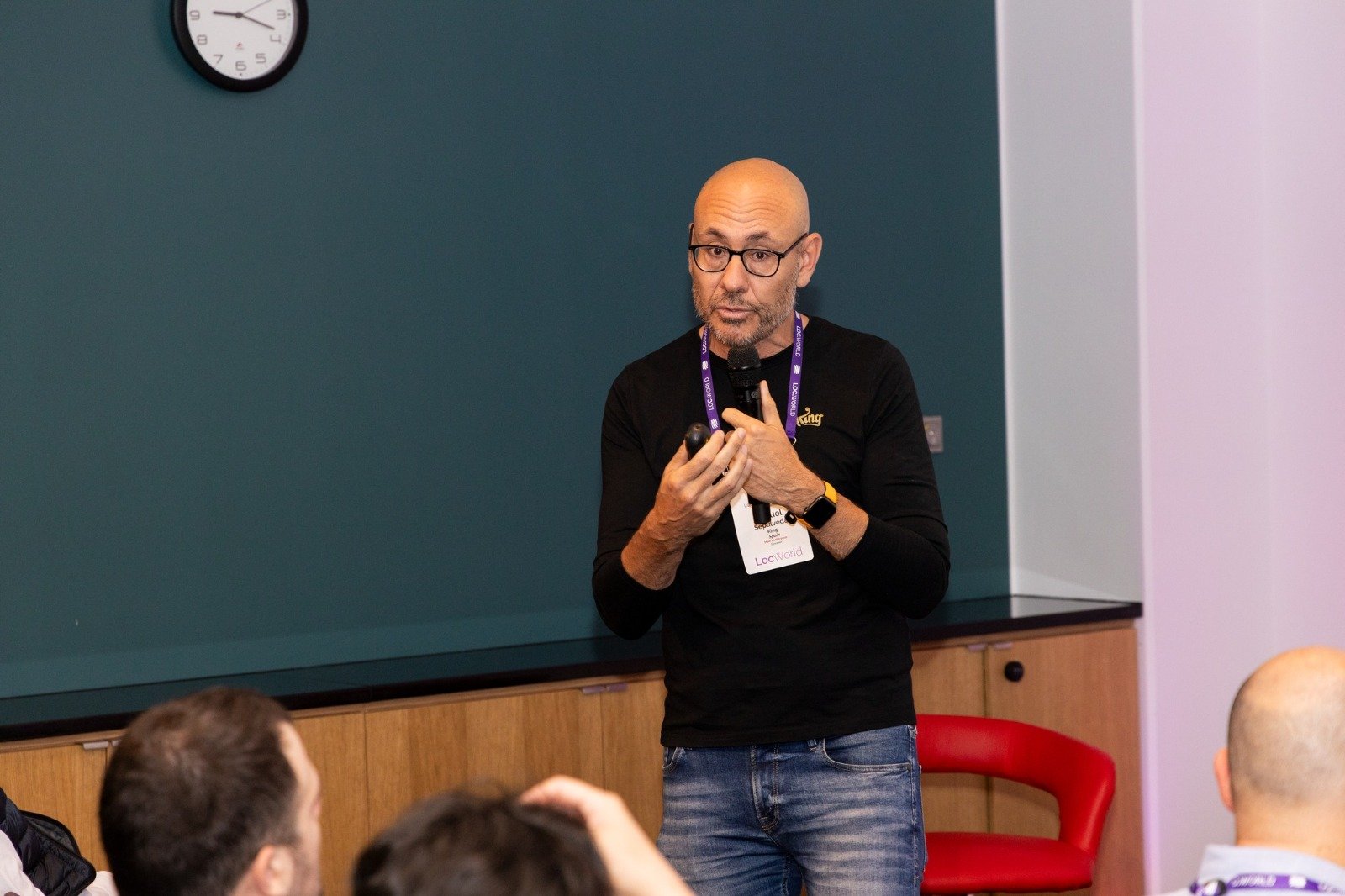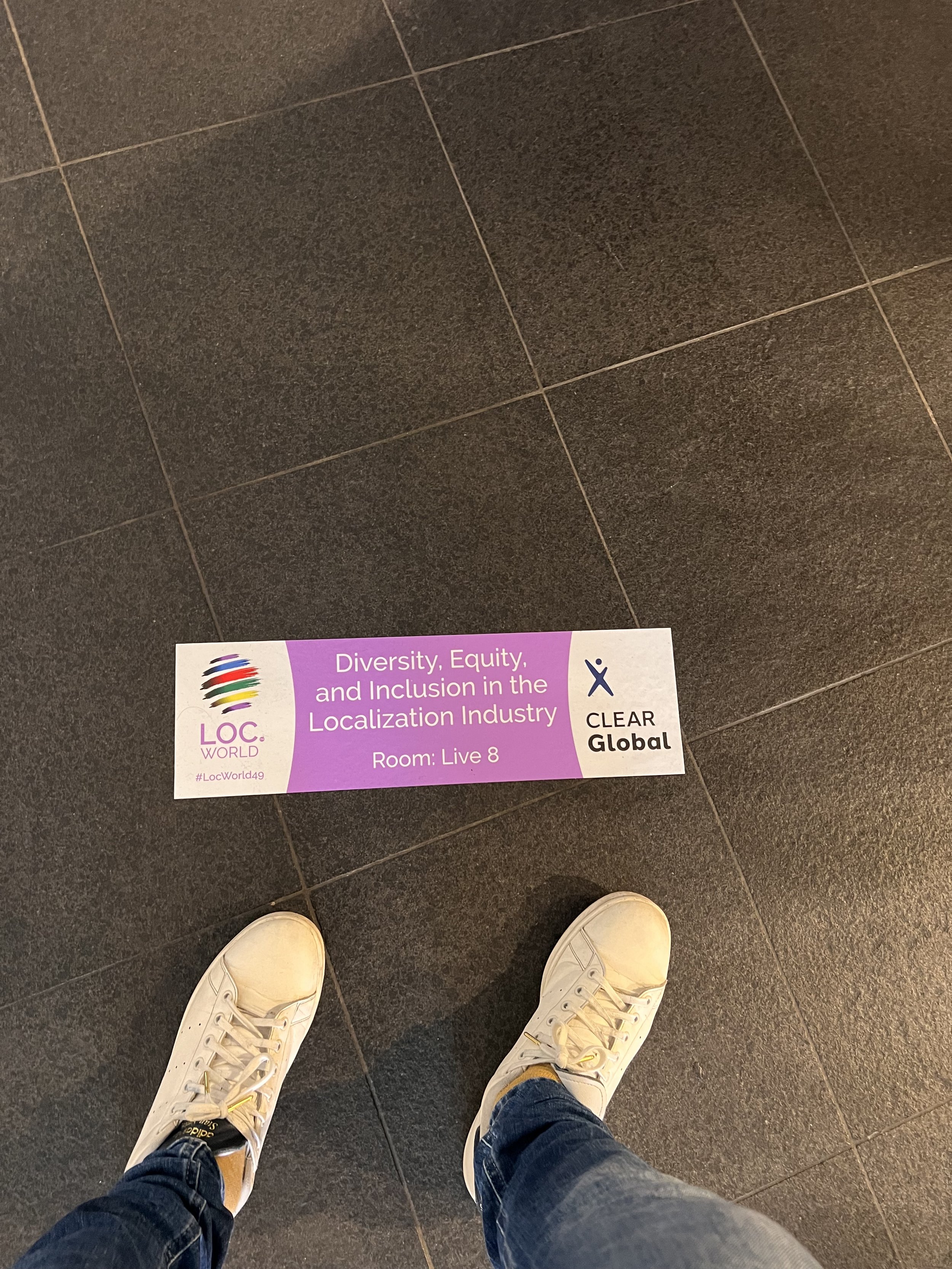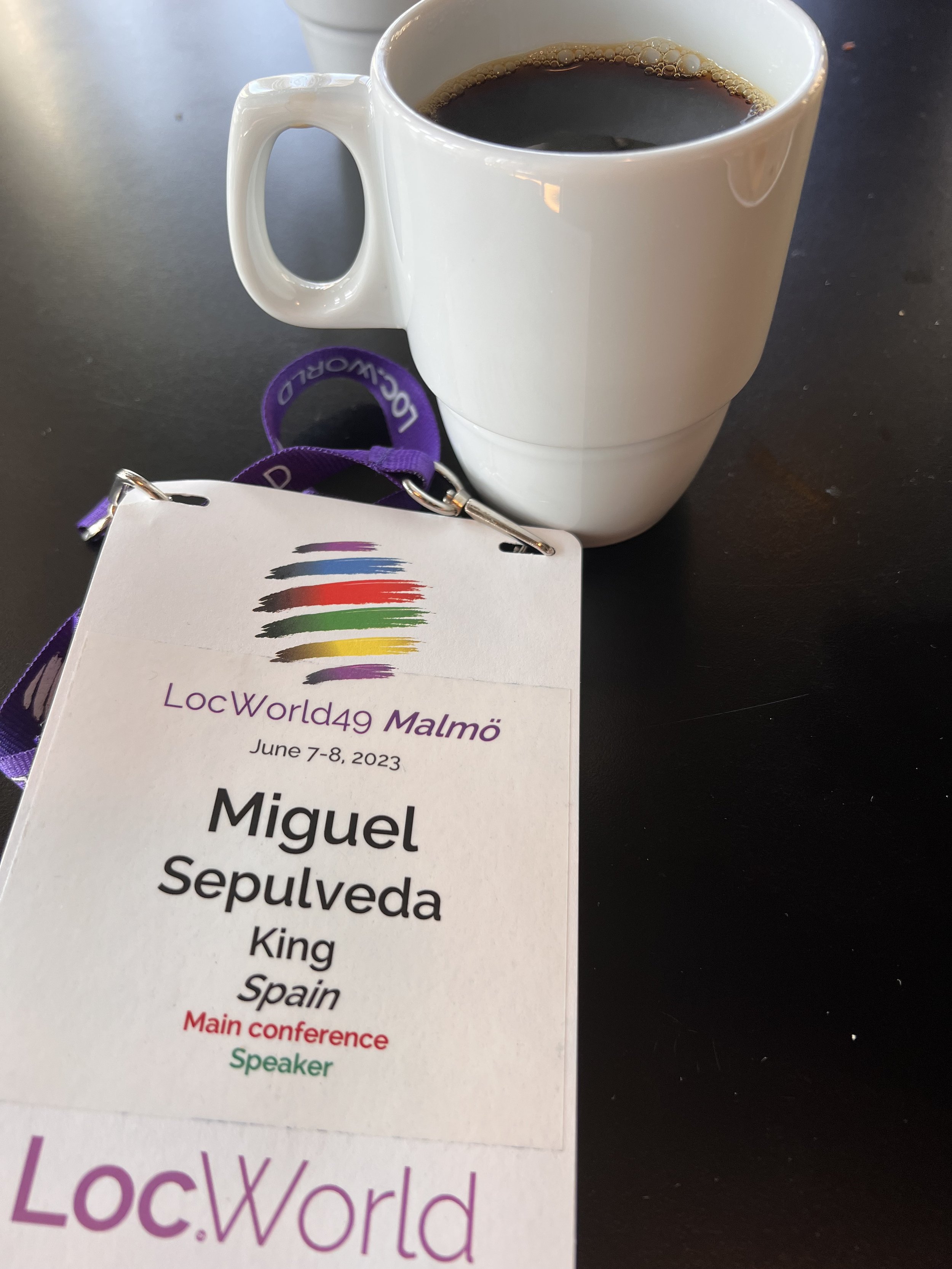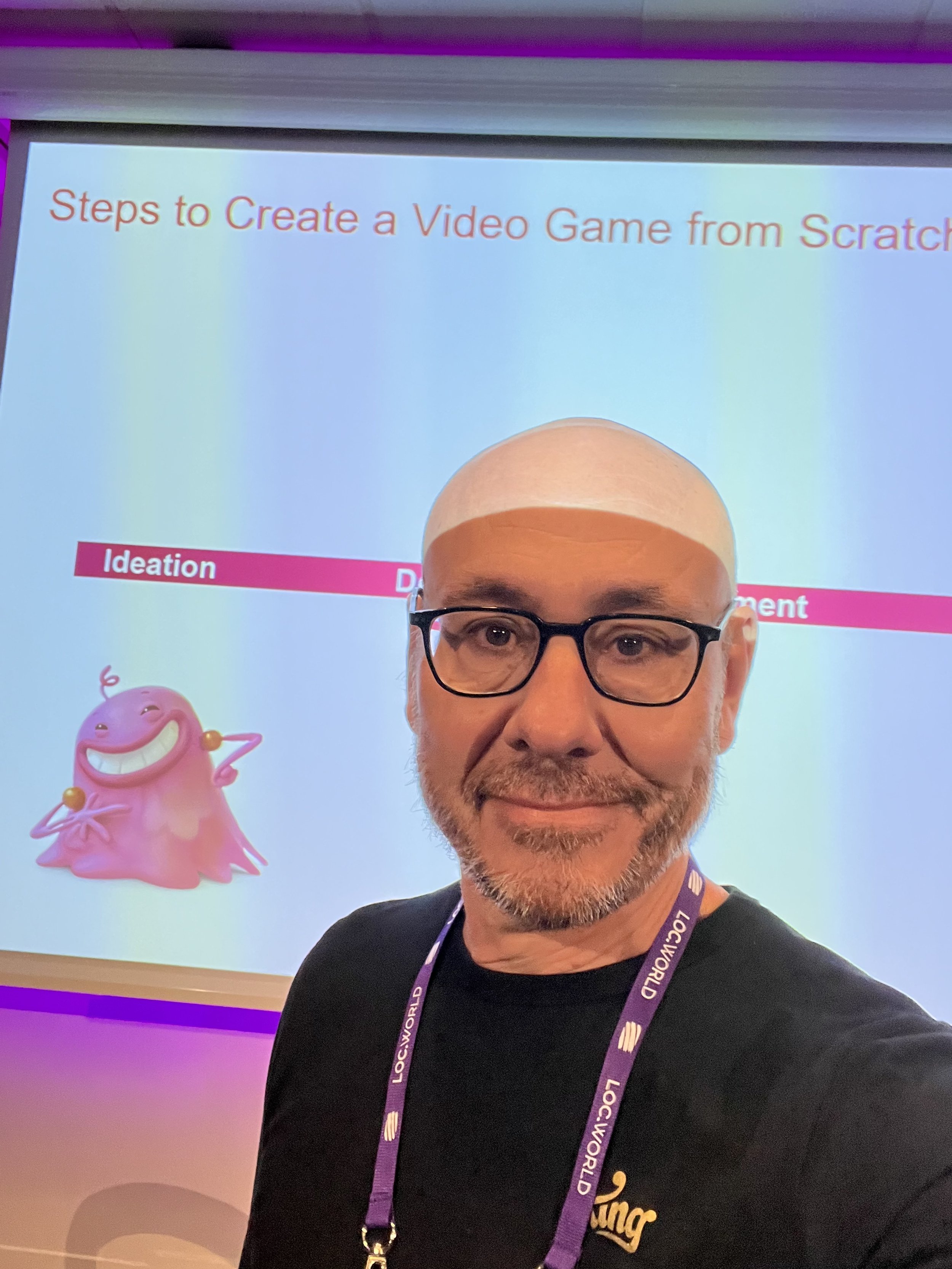Moving left, seeking Localization's collaboration in all product development phases
The topic I was covering was called "Localization Strategies for the Entire Development Process, from Early Development to Player Support” and in my talk, I was discussing what strategy we can follow so that a Globalization, Localization team has a relevant presence in the different phases of creating a video game, from early development to player support.
While it is true that the talk focused on the creation/localization of video games since it is my current area of work, I believe that many of the ideas I shared apply to other types of content and Localization industry verticals.
The way I see it is that Localization is just another business process that needs to be integrated into game development. I don't think the approach of first creating content and then localizing that content is the best approach nowadays.
If we think broadly about the different phases required to produce a video game, we can summarize them into five major areas: ideation, design, development, launch, and support.
These five areas encompass the entire process of creating software
The main problem is that Localization teams usually are not involved in the earlier phases, and their contribution is more towards the middle phase
This part here is where localization teams are usually reached out to.
I think this is because many people see localization as a transactional activity. They request localization just when they need it. However, the successful localization of a video game (or any software piece) requires intentional planning and collaboration with various stakeholders throughout the entire development phase of the video game.
It's not just about ordering translation requests and receiving localized files.
That is a very simplistic view of the job of a localization professional.
We can do more; we can do better :)
So, how can we change the perception of localization from something secondary to something that greatly influences the player's experience?
It's all about moving to the left, in other words, getting involved in the process from the very beginning.
There are multiple benefits of involving Localization early in development phases, for example
1. Inclusivity. Cultural sensitivity is one of the main areas where a localization team can contribute throughout the entire development process, but it is particularly important in early development. By involving a localization team early on, developers can ensure that their game is culturally sensitive and avoids any potentially offensive or insensitive content. Providing input in other areas, such as UI/UX localizability readiness or offering support for accessibility requirements, are also valuable elements to provide feedback on as soon as possible.
2. Cost/schedule efficiency is another reason. The sooner the localization team is onboarded, the fewer bugs there will be at the last minute, ultimately having a direct impact on the budget and schedule.
3. And last but definitely not least, more career development opportunities for the globalization/localization team members. I truly believe that a localization professional is more than just a mere file pusher getting content translated. Localization project management functions go far beyond file management. Moving to the left can create career development opportunities for localization professionals.
How to move to the left
Clich HERE to download the image
Let's go now to share some strategies that we can follow to be involved in the entire development process
Activities Mapping
Map the activities to find a link between what the game team does and what a Localization/Globalization team can do to help them.
Break down the requirements for each game development phase and do the same for localization. We must identify the various touch points where content generation and globalization processes intersect in each phase.
In every touchpoint phase, ask, what’s the impact of Localization in this particular task? That’s an exercise that every Localization professional can do; for example, a LSP might brainstorm about how they could contribute beyond their typical business-as-usual activities.
Give visibility to the work. Once we have decomposed the different tasks in development and refelct on how we can support them from a Localization perspective, it’s our turn to give visibility to the work done
A vital aspect of the localization work is giving visibility to the work we do and explaining to our stakeholders the impact of our efforts. And to achieve that, the use of metrics will be fundamental.
Work on getting your Localization metrics ecosystem in order
Metrics are fundamental when planning to collaborate with a game team throughout the entire development phase. There are no metrics that can be said to fit all teams.
Each Localization team has to search for the metrics that are important to them.
However, in general terms, we consider Globalization analytics covering areas such as
Project Management,
Quality
Finance
Revenue
Engagement metrics
Revenue and engagement metrics are critical, allowing us to shift the conversation with stakeholders from quality to value. They also allow us to escape the trap of speaking about ROI, as isolating the impact of Localization activities as part of global revenue is extremely difficult (perhaps even impossible).
Give visibility to the Localization work
Something very important in the stakeholder management area is giving visibility to everything a localization team does. There is a trend, which I think is the oversimplification of a localization professional's work. The translation is perceived as something very easy to do, sometimes even done automatically, like using Google Translate or, nowadays ChatGPT.
However, the truth is that the reality is quite far from that narrative that we often hear. For this reason, actions related to giving visibility to localization activities are so important. It's essential to have a communication plan to give visibility to the work we do as localization professionals
Elements that we might consider in our communication plan are:
Newsletters - Send a localization newsletter to internal stakeholders to inform them about localization efforts and foster collaboration.
QBRs (Quarterly Business Reviews) -The objective of sending a Localization QBR to internal stakeholders is to provide a comprehensive update on localization efforts, highlight achievements, address challenges, and align localization with business objectives.
Regular alignment meetings. The objective of regular alignment meetings with internal stakeholders is to promote effective communication, collaboration, coordination, accountability, and engagement, ultimately driving the localization efforts toward its goals and ensuring the success of its initiatives.
Shows and Tell - The objective of Show and Tell sessions is to dive deep into relevant topics, providing our stakeholders with a better understanding of our work in specific areas.
The ultimate Goal of our communication plan - Explain how Globalization's contribute to company objectives
Conclusion
With this, we come to the end of this post, where I have shared with you different ideas to expand the role of a localization team beyond the typical translation tasks that many of our stakeholders think is the only thing we do.
A localization professional has a very varied and unique set of skills since we possess knowledge about culture, technology, language, project management, and more.
By explaining the impact of localization activities, we can actively contribute to expanding the role of a localization team and avoid those transactional and afterthought relationships that often accompany us in our day-to-day life.
Find a way to move to the left and reflect on what you can offer game teams from a localization perspective during each phase we covered in this presentation. Moving to the left is the best way to expand the role of localization professionals and make a more meaningful contribution to creating inclusive video games for global audiences.




















This feels like a pivotal moment. Localization teams are being asked to support more markets, move faster, use AI responsibly, and show impact, not just output. Expectations are higher than ever, but many teams are still trained mainly for execution. We are strong at delivering localization work, yet we often struggle to move from output to outcome and to clearly explain the impact of what we do.